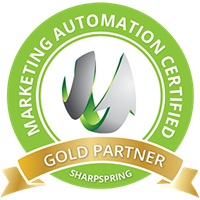What Is Inbound Marketing?
Inbound marketing is a strategic approach to creating valuable content that aligns with the needs of your target audiences and inspires long-term customer relationships. More specific than outbound marketing, which casts a wide, generic net with TV commercials, billboards, and the like, this type of campaign creates digital content for a narrow audience and thoughtfully positions it so customers find it during their organic searches. It is also an average of 61% less expensive. This means you can efficiently and cost-effectively target interested consumers who are already searching for your products or services. There are three components to the inbound process: Attract, Engage, and Nurture.
Attract
Why is inbound marketing important? These days, before most people invest time, energy, or money into something, they typically do some research, looking for facts and figures and knowledgeable resources to guide their decision-making process. Data shows 61% of consumers prefer companies that provide personalized content. Blogs, product or educational demos, infographics, and social media posts using influencers are just a few tailored offerings a company can tailor to capture the attention of these interested customers.
Supporting your digital assets with basic tactics like search engine optimization (SEO) builds your reliability within search engines, namely Google, and pushes your website higher up in the search engine results pages (SERP), benefiting you in two ways. First, despite millions of results, few information hunters trek beyond the first page of results. You need your page to rank on that first page if you want to be found by as many people as possible. Second, the more you are found, the higher your brand awareness becomes, leading to more people seeing you as a reputable resource. For example, blogs are a visible way to assert your knowledge, build trust, and help you become a thought leader in your area of expertise. That’s a nice cycle to be in.
Engage
Once you have been discovered by your target audience, your goal is to stay in front of them and convince them that your product is worth their consideration. Regularly releasing useful, even innovative, content widens your well of resources and reinforces that you are the one to buy from or follow. Here, inbound marketing is beneficial because it is digital, allowing you to track online behavior and adapt to what the data tells you. If your videos get more engagement than infographics, for instance, you know to put more energy into making videos.
Additionally, ensuring a positive customer experience at this stage is vital. Responding to questions and offering guidance on social media, by phone, or via email, and making it clear customer satisfaction is important to you gives your interested audience an extra reason to want to work with or buy from you and builds trust in your brand.
Nurture
As mentioned in the beginning of this post, inbound marketing is about offering your expert knowledge and strategically publishing it on the web, positioning your company so that interested users find you. Once people have bought your products or services, it’s important to maintain that relationship so they continue not only to keep you in mind but also recommend you to others. Continuing to respond positively when reached out to is necessary, but you aren’t limited to that. You can proactively extend information or offers to your already-engaged audience through social media posts or newsletters, or use advertising to continue to target known customers with items they are likely to be curious about. At this stage, using a marketing automation service is a huge boon, as it will allow you to pre-program, and track the success of, messaging campaigns on various platforms without having to babysit each individual process. With or without that helpful tool, continuously appealing to your consumers is vital to remaining top-of-mind.
What are the Advantages to Inbound Marketing?
- Inbound marketing content brings in people who are actively searching for your services.
- 61% of customers prefer personalized content and often find unsolicited marketing invasive.
- It is 61% less expensive on average and has a high ROI.
- You get to know your specific audience and their preferences.
- If preferences change, you can track that and adapt without any surprises.
- You are able to more easily continue a positive relationship with your customers.
How to Get Started with Inbound Marketing
Inbound marketing is a great way to engage already interested consumers. If you are considering this sort of campaign, but need help with the strategy or content that can make it truly successful, the knowledgeable team at WiredViews can help. From email marketing campaigns to full website redesigns, our team is made up of experts who are passionate about all things digital. To learn more, check out a few of our recent projects, or contact us for a quick chat.

